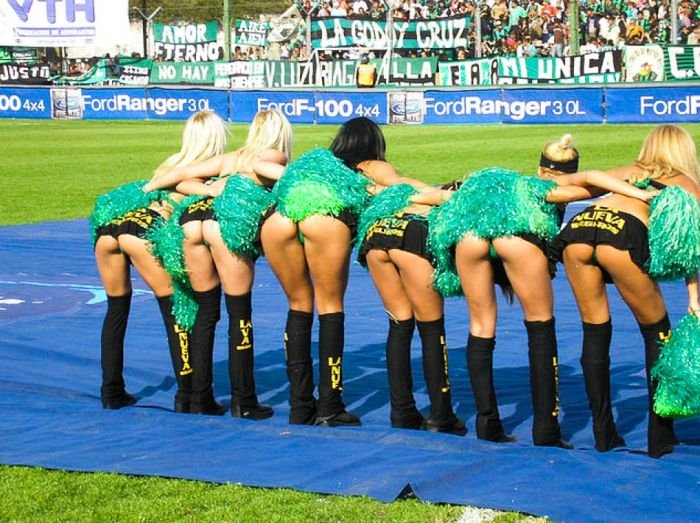|
|
Mexican Cheerleader Girls
|
Cheerleading is a physical activity, sometimes a competitive sport, using organized routines, usually ranging from one to three minutes, which contain the components of tumbling, dance, jumps, cheers, and stunting to direct spectators of events to cheer on sports teams at games or to participate in competitions. The person involved is called a cheerleader. Cheerleading originated in the United States, and remains a predominantly American activity, with an estimated 1.5 million participants in all-star cheerleading. The growing presentation of the sport to a global audience has been led by the 1997 start of broadcasts of cheerleading competition by ESPN International and the worldwide release of the 2000 film Bring it On. Due in part to this recent exposure, there are now an estimated 100,000 participants scattered around the rest of the world in countries including Australia, Canada, China, Colombia, Finland, France, Germany, Japan , the Netherlands, New Zealand and the United Kingdom.
History
Princeton graduate Thomas Peebles introduced the idea of organized crowds cheering at football games to the University of Minnesota. However, it was not until 1898 that University of Minnesota student Johnny Campbell directed a crowd in cheering "Rah, Rah, Rah! Ski-u-mah, Hoo-Rah! Hoo-Rah! Varsity! Varsity! Varsity, Minn-e-So-Tah!”, making Campbell the very first cheerleader and November 2, 1898 the official birth date of organized cheerleading. Soon after, the University of Minnesota organized a "yell leader" squad of 6 male students, who still use Campbell's original cheer. In 1903 the first cheerleading fraternity, Gamma Sigma was founded. Cheerleading started out as an all-male activity, but females began participating in 1923, due to limited availability of female collegiate sports and men being drafted for war. At this time, gymnastics, tumbling, and megaphones were incorporated into popular cheers, and are still used. It is estimated that 97% of cheerleading participants overall are female, but males still make up 50% of cheering squads at the collegiate level.
|
|









